Progressive skeletal defects caused by Kindlin3 deficiency, a model of autosomal recessive osteopetrosis in humans
- PMID: 35342016
- PMCID: PMC9133165
- DOI: 10.1016/j.bone.2022.116397
Progressive skeletal defects caused by Kindlin3 deficiency, a model of autosomal recessive osteopetrosis in humans
Abstract
The cellular and molecular mechanisms of bone development and homeostasis are clinically important, but not fully understood. Mutations in integrins and Kindlin3 in humans known as Leukocyte adhesion deficiencies (LAD) cause a wide spectrum of complications, including osteopetrosis. Yet, the rarity, frequent misdiagnosis, and lethality of LAD preclude mechanistic analysis of skeletal abnormalities in these patients. Here, using inducible and constitutive tissue-specific Kindlin3 knockout (K3KO) mice, we show that the constitutive lack of embryonic-Kindlin3 in myeloid lineage cells causes growth retardation, edentulism, and skull deformity indicative of hydrocephaly. Micro-CT analysis revealed craniosynostosis, choanal stenosis, and micrognathia along with other skeletal abnormalities characteristic of osteopetrosis. A marked progression of osteosclerosis occurs in mature to middle-aged adults, resulting in the narrowing of cranial nerve foramina and bone marrow cavities of long bones. However, postnatal-Kindlin3 is less critical for bone remodeling and architecture. Thus, myeloid Kindlin3 is essential for skeletal development and its deficiency leads to autosomal recessive osteopetrosis (ARO). The study will aid in the diagnosis, management, and treatment choices for patients with LAD-III and ARO.
Keywords: Bone analysis; Computerized tomography (CT); Integrins; LAD-III; Osteopetrosis; Teeth.
Copyright © 2022 The Authors. Published by Elsevier Inc. All rights reserved.
Conflict of interest statement
1.9 Conflict of interest
The authors declare no competing interests.
Figures
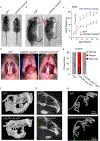
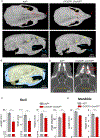
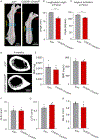
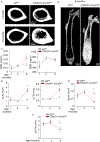
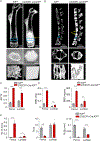
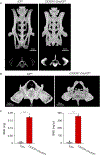
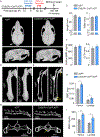
Similar articles
-
Clinical and Osteopetrosis-Like Radiological Findings in Patients with Leukocyte Adhesion Deficiency Type III.J Clin Immunol. 2023 Aug;43(6):1250-1258. doi: 10.1007/s10875-023-01479-7. Epub 2023 Apr 4. J Clin Immunol. 2023. PMID: 37014583
-
Spectrum of Skeletal Imaging Features in Osteopetrosis: Inheritance Pattern and Radiological Associations.Genes (Basel). 2022 Oct 28;13(11):1965. doi: 10.3390/genes13111965. Genes (Basel). 2022. PMID: 36360203 Free PMC article. Review.
-
Novel mutations of TCIRG1 cause a malignant and mild phenotype of autosomal recessive osteopetrosis (ARO) in four Chinese families.Acta Pharmacol Sin. 2017 Nov;38(11):1456-1465. doi: 10.1038/aps.2017.108. Epub 2017 Aug 17. Acta Pharmacol Sin. 2017. PMID: 28816234 Free PMC article.
-
Severe malignant osteopetrosis caused by a GL gene mutation.J Bone Miner Res. 2004 Jul;19(7):1194-9. doi: 10.1359/JBMR.040407. Epub 2004 Apr 12. J Bone Miner Res. 2004. PMID: 15177004
-
Osteopetrosis.Orphanet J Rare Dis. 2009 Feb 20;4:5. doi: 10.1186/1750-1172-4-5. Orphanet J Rare Dis. 2009. PMID: 19232111 Free PMC article. Review.
Cited by
-
Erythropoietin Receptor (EPOR) Signaling in the Osteoclast Lineage Contributes to EPO-Induced Bone Loss in Mice.Int J Mol Sci. 2022 Oct 10;23(19):12051. doi: 10.3390/ijms231912051. Int J Mol Sci. 2022. PMID: 36233351 Free PMC article.
-
Skeletal phenotypes in secreted frizzled-related protein 4 gene knockout mice mimic skeletal architectural abnormalities in subjects with Pyle's disease from SFRP4 mutations.Bone Res. 2023 Feb 20;11(1):9. doi: 10.1038/s41413-022-00242-9. Bone Res. 2023. PMID: 36808149 Free PMC article.
References
Publication types
MeSH terms
Grants and funding
LinkOut - more resources
Full Text Sources
Molecular Biology Databases

